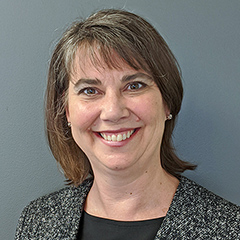High-quality primary care plays an essential role in improving health and advancing equity. It is the most fair, accessible, and cost-efficient way for people, regardless of race, ethnicity, or income, to enter the health care system and obtain services that meet their needs. For decades, the primary care system has struggled with systemic underinvestment, a shrinking workforce, gaps in access to care, skewed payment systems, and severe underfunding of primary care research.
In a recent webinar, we discussed how to strengthen primary care by centering equity and reducing longstanding disparities in access, experience of care, and health outcomes. Our group agreed that a paradigm shift is needed in how primary care is viewed, funded, and delivered. Such a shift would regard primary care as a common good to be promoted by responsible public policy and supported by private-sector action, as proposed in a recent report from the National Academies of Sciences, Engineering, and Medicine (NASEM).
We highlight four actions discussed during the webinar that can help strengthen primary care and advance equity.
1. Make equity an explicit goal. The current health care system has conflicting priorities that, taken together, have weakened the primary care infrastructure, and widened health inequities. To strengthen primary care and advance health equity, we need to establish equity as an explicit goal, and center equity in all efforts to promote the maximum level of health possible for all people. Consideration of health equity could then guide decisions about partnerships, investments, care delivery, and payment reforms.
2. Pay more—and differently—to achieve more equitable outcomes. We cannot transform primary care without payment reform across all payers—Medicare, Medicaid, and commercial. Our core payment principles need to shift so that they support the goals of improving health, eliminating health disparities, and reducing the total cost of care. While how we pay is critical, what we pay is also important. For example, while Medicare serves people of all incomes, Medicaid serves populations with low income and a disproportionate share of people of color, who often have complex health conditions and social needs. Yet Medicaid pays, on average, 67 percent of the Medicare rate for primary care services, and in some states, as low as 32 percent of Medicare’s rate. If we want to improve access to care and achieve more equitable outcomes, public and private entities need to design more effective payment systems and adjust payment rates, in addition to providing other supports.
3. Focus on the whole person and integrate community perspectives. In medicine, there is a preference for standardization, efficiency, and expertise. But the status quo can stand in the way of achieving more equitable outcomes when it rigidly treats each person as the same and ignores their lived experience. Instead, we need to meet the physical, behavioral, and unmet social needs of individuals and families and tailor care based on those needs and the social contexts of our patients. Expertise that is informed by collaboration, shared experience, and empathy will more effectively inform how to take care of people. At the macro level, we need to ensure communities have a substantive role in developing programs and policies that are needed to advance health equity. This is not just about fielding one survey or convening one advisory committee. It is about a commitment to sustained and authentic collaboration with communities.
4. Make investments in primary care as well as community-based resources. To improve health equity, we must address significant resource inequities among patients, communities, and providers. We need to make the necessary investments to support formal relationships and collaborations between primary care, public health, and community-based health and human services organizations. Collective action is critical for meeting the goals of high-quality primary care and equitable health, but these relationships will require increased investment in the necessary staff, technology, data sharing, and leadership.
Though these actions are ambitious, we believe that there is a unique opportunity to address such critical issues. NASEM’s call to action in 2021 provided a blueprint for how to strengthen primary care. Seventeen states have now committed to tracking, reporting, and increasing their investments in primary care. The Centers for Medicaid and Medicare Services are discussing how to pay for better primary care, not just whether they should pay. And the U.S. Department of Health and Human Services is set to release an action plan for its initiative to strengthen primary health care. The plan will aim to provide a “federal foundation for the provision of primary health care for all that supports improved health outcomes and advanced health equity.” Taken together, this combination of momentum, leadership, and clear guidance about what needs to be done to strengthen primary care and center equity gives us hope for meaningful action.
The views in this blog are those of the authors. They do not necessarily reflect the views of the Office of the Assistant Secretary for Health or the U.S. Department of Health and Human Services.







